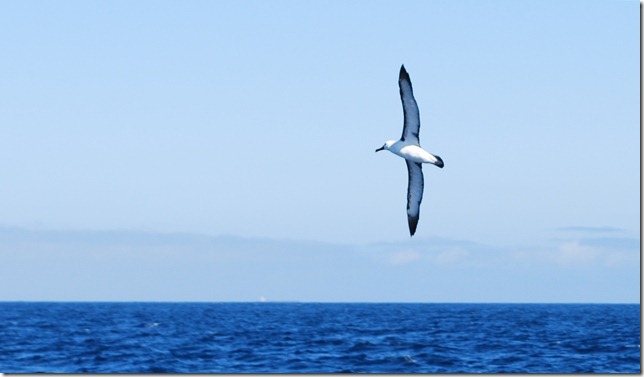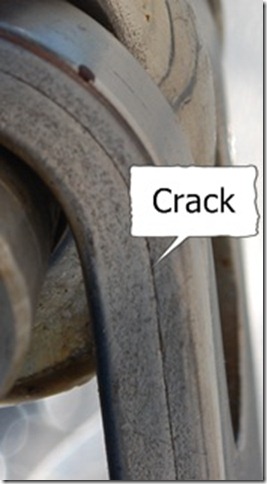Lat: 22 49.567′ S
Lon: 6 44.348′ E
There’s a good question that nobody’s asked us yet: Why did we have to stay in New Zealand for nearly 6 months to dodge the cyclone season there but get to leave South Africa after only a couple of months? The answer is that the South Atlantic is unique among the six hemispheric halves of the world’s three big oceans in that it doesn’t have any cyclones. If the Pacific Islands were here, there would have to be an armada of billy-club-toting anchorage cops telling long-lingering sailors to “Move along, move along. You’ve seen plenty here. Keep it moving.” As it is, there are only three islands in the South Atlantic tradewind path: St. Helena, which is isolated, steep-to and not a typical tropical isle, Ascension, which until recently was an off-limits military base, and Fernando de Noronha, which we’re told lives up to the ideal of a beautiful cyclone-free tropical paradise but is run by Brazil as a nature preserve with hefty per-day fees for the boat and each person on board. Our itinerary currently calls for stops at both St. Helena and Fernando.
We were told that the South Atlantic would bring some beautiful, tranquil spinnaker sailing and so far it’s done just that. We’ve had our second, smaller kite up for about 24 hours now and it’s been wonderful, with speeds generally between 4.5 and 7.5 knots. The wind seems to pick up a bit after sunset and start to die down after midnight, with a generally steady and pleasant 15 knots or so during the day. With winds like that, the seas have stayed calm and it’s added up to one of the most pleasant 4-day offshore runs we can remember.
As you might expect, everyone’s been in a good mood. Sunbathing, boat work, movies, books, naps, and chats with each other and on the radio fill most of the day and the nights have been mostly clear and star-filled. Tracey is learning constellations at an alarming rate. There may be a virtually infinite number of visible stars out here, but the Greeks were definitely finite in their imaginative ability to group them into constellations and at the rate she’s going she’s going to achieve lecturer status before we make St. Helena. The chow has been excellent as usual. Last night Lauren went for another first and turned out an amazing stir-fry with (fake) beef, butternut squash, onion, and sweet red pepper, and Asian noodles.
We just entered the tropics last night and right on schedule, the occasional flying fish we’d started to see has turned into consistent groups of 30 or so this morning, bursting out of the water beside us and flying away from our splashing hulls. The number of ships on AIS and horizon has dropped to virtually nil although we did have a close encounter yesterday with a cargo ship called “Glorious” (didn’t look it, and the officer on the bridge was unusually curt). The sea birds seem to be in short supply as well, which is rare. At least one sea bird has almost always been in sight for our entire trip so their absence feels a little strange.
 A rare, rare sight on this passage
A rare, rare sight on this passage
We have had a couple of issues to bring us back to reality. One is that the new port cap shroud toggle (the same part that broke and nearly brought the mast down in the Indian) is cracking. This time the cracks are much larger, but they’re in a different place and look like less of a problem. I’ve marked the cracks with a Sharpie and so far they don’t seem to be growing. Even though only one of them failed in the Indian, I replaced both of them, so now we have one old “good” one as a spare that I’m planning to swap in at St. Helena unless it looks like we need to do it sooner.
Our other “problem” is that the fish aren’t biting. As far as we can tell, neither of our lures has had even a nibble. Tracey did the modern version of a rain dance and drew up an artistic “vision board” depicting us catching a Mahi Mahi that’s supposed to move things along, but so far we’re still pulling in empty lines at sunset. I’ve been identified as the weak link in the effort to achieve by visualizing our catch, and since I also put the two fishing rigs together, I guess it’s time to start making excuses. At least nobody else we’ve talked to is having much luck either.
We did managed a couple of milestones yesterday. One is that we passed 75% of the way around as measured by longitude. The other is that we entered the 0 Zulu or Greenwich Mean Time time zone. All sorts of things aboard an offshore vessel are done in GMT (aka UTC), so we’re always keeping two times (and often a 3rd “Skype time zone” to track friends and family back home). For now, radio skeds, navigation, etc. are actually the same time local time and GMT. Pretty mundane stuff for the reader I guess, but I’ve been tracking things in this time zone for nearly two years, so it’s a bit of a milestone to finally sail here. Thankfully we’re a good deal farther south than Greenwich.


